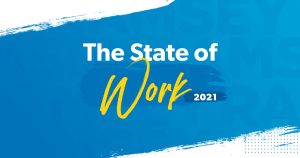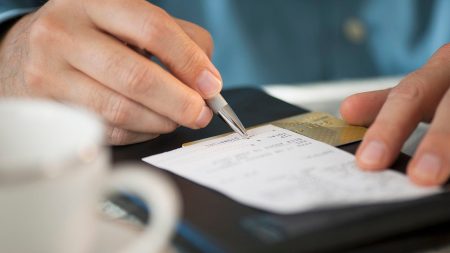Key takeaways
- Excess credit card debt can be stressful, and it can prevent you from reaching your larger financial goals.
- But even though it can feel insurmountable, it is possible pay down credit card debt.
- Several different strategies can help you get out of credit card debt, from payoff plans like the avalanche and snowball methods, to consolidation products like balance transfer credit cards and personal loans.
- The best method for paying down your credit card debt depends on the amount of debt you have, your total savings, your financial habits and your spending preferences.
Getting yourself out of credit card debt may seem daunting, but it’s definitely possible.
Many Americans are struggling with credit card debt. Credit card balances rose by $48 billion in the third quarter of 2023 to $1.08 trillion — a record high, according to a Federal Reserve Bank of New York report.
Given inflation and continued high interest rates, those balances are expensive to carry. There have been 11 Federal Reserve interest rate hikes since March 2022 — most recently, a 25-basis-point increase announced on July 26, 2023, which was maintained for a seventh consecutive time after the Federal Open Market Committee (FOMC) meeting on June 12, 2024. As a result of those decisions, plus inflation and other industry factors, the average credit card APR remains above 20 percent.
Short of receiving a windfall, there’s no quick-fix solution for getting out of debt, despite what solicitors or infomercials might have you believe. However, a combination of smart money moves can reduce your debt, lower your credit card APR and put you on the right track toward a debt-free life.
Here are several techniques for paying off credit card debt the smart way:
1. Try the avalanche method
- Who this strategy is good for: Those motivated by interest savings
If you want to get out of debt as quickly as possible, list your debts from the highest interest rate to the lowest. Make the minimum monthly payment on each, but throw all your extra cash at the highest interest debt. This is sometimes called the debt avalanche method of repayment — “avalanche,” because you’re prioritizing taking down your most expensive debts in the long term first.
Fifteen percent of survey respondents are using this strategy to pay down debt, according to a 2023 Federal Reserve report. It’s a particularly good idea for saving money since you’ll have paid the least amount of interest overall when compared with other strategies, says J. Dennis Mancias, a former financial advisor at Symmetry Financial Solutions in San Antonio.
If you have, say, $600 per month you can budget for paying off debt, you would use the majority of those funds to pay off the highest-interest debt first. Once that debt is paid off, you can focus those funds on the next-highest-interest debt and eliminate it faster, since you won’t have as much interest to pay off.
“The key to this strategy is to maintain the $600-per-month debt payment throughout,” Mancias says. “So, once one card is paid off, you don’t eliminate that payment, but instead roll it over to the next card to accelerate the payoff.”
Paying the most expensive balance first might be the cheapest way to get out of debt, but if you don’t end up sticking with this method, it won’t save you money.
2. Test the snowball method
- Who this strategy is good for: Those motivated by small successes
With the snowball method, you pay off your debts from smallest to largest. Getting a debt paid off in the shortest time possible is a good motivator that could help you stay on track — which may be why 17 percent of YouGov/CreditCards.com survey participants claim to use this method.
As with the avalanche method, you make the minimum monthly payment on each debt, then you go full out on the one you’re focused on paying off. Once you’ve repaid it in full, you put the money you were allocating to it toward the next-largest debt on your list — the “snowball” amount that gets larger as you pay off debts.
3. Consider a balance transfer credit card
- Who this strategy is good for: Those who are good at keeping track of credit card payments
If you have good to excellent credit despite your debt — which is possible if you make your minimum monthly payments on time and keep your credit utilization ratio low — you may qualify for a 0 percent intro APR balance transfer offer with top balance transfer credit cards.
This zero-interest introductory offer could last anywhere from 12 to 21 months, allowing you transfer your higher-interest balances to the new card. You’ll save on interest for the duration of the 0 percent intro APR period, making it easier and faster to get out of high-interest debt.
“You should always pay attention to the interest rate after the promotional period is over,” says Justin Zeidman, assistant vice president of open banking at Navy Federal Credit Union. Consider how long it will take to pay off your credit card debt compared to the promotional period so you don’t get stuck with a higher interest rate after the 0 percent intro APR period is over.
4. Get your spending under control
- Who this strategy is good for: Anyone lacking a sufficient budget
Sometimes people get into credit card debt due to unexpected medical or emergency expenses. Other times, the source of debt is chronic overspending, which often means you’re spending more than you’re saving or more than you have in your account. Forty-three percent of respondents to the YouGov/CreditCards.com survey say they’re prioritizing cutting expenses as a way to reduce debt.
To gain full insight into how much you’re spending, making a reasonable budget is the next best step toward alleviating that debt. Matt Kelly, owner of Momentum: Personal Finance Coaching in Durango, Colorado, recommends that your budget account for:
- Basic necessities — rent or mortgage, utilities, groceries and gasoline
- Obligations — minimum payments on credit cards and other debt
- Nice-to-haves — restaurants, coffee and entertainment costs
- Irregular recurring expenses — insurance, car repairs, tires, haircuts, vitamins, toiletries, vet bills, holiday gifts, travel, weddings and gifts
It’s the last category that often trips up people and becomes the source of credit card debt, Kelly says. “These little and not-so-little expenses go onto the card and are hard to pay off.”
Once you’ve put your expenses down on paper or entered them into a spreadsheet, go through each item and find ways to free up enough money each month to pay off all your debts in 12 to 18 months, he says.
5. Grow your emergency fund
- Who this strategy is good for: Anyone lacking a significant emergency fund
If you’re one of the many Americans who don’t have significant savings, overusing credit cards is an easy trap to fall into — especially if it’s not possible to borrow from friends or family or cut back on spending.
“You have to build your savings first before concentrating on debt,” says Steve Repak, a certified financial planner and the author of “6 Week Money Challenge.”
He suggests building your short-term savings to at least $500 while making only the minimum payments on your existing credit cards before you start concentrating on your debts. That way, you can tap your savings instead of swiping your credit card if you have an unexpected expense.
“For consumers that have debt and their income isn’t high enough to save anything, they either have to reduce expenditures or increase their income, and the best-case scenario would (be) to do both,” Repak says. “Supplementing your living expenses using credit cards cannot be a solution.” Working extra hours or taking on a side hustle can be a way to make this happen, according to the 18 percent of YouGov/CreditCards.com survey respondents who are focusing on increasing their income to pay down debt.
6. Switch to cash
- Who this strategy is good for: Anyone looking for ways to limit their credit card usage
If your main goal is to pay off your credit card debt, the last thing you want to do is add to that debt by continuing to charge your expenses.
“Quit using your credit cards,” Repak says. “It seems like a no-brainer, but sometimes it is easier said than done.”
Paying with cash not only prevents you from accumulating more debt, but it can also help you spend less overall, due to the psychological act of handing over physical bills. It also requires you to plan ahead and makes certain purchases inconvenient, so you’re less likely to make them.
7. Explore debt consolidation loans
- Who this strategy is good for: Someone with too many credit card accounts who finds it hard to stay on top of payments
Debt consolidation can be a useful way to combine multiple lines of high-interest credit card debt under a loan with one fixed, monthly payment — and it’s one 8 percent of YouGov/CreditCards.com survey participants are using. You can consolidate your debts by initiating a balance transfer. But you could also consider taking out a debt consolidation loan or, if you’re a homeowner, even a home equity loan.
Debt consolidation can make it easier and less expensive to pay off your debt, but only if the interest rate of the debt consolidation loan is lower than the interest rates of your credit cards. Use Bankrate’s debt consolidation calculator to find out how much money you could save on interest.
Debt consolidation loans also come with a perk: If you make the monthly payments in full and on time, your credit score could see a positive impact. The best debt consolidation loans tend to carry lower interest rates than credit cards, so if you meet the qualifications, you may be able to save money on your credit card debt.
The bottom line
Of course, when it comes to paying down debt, nothing beats simply paying more than your minimum payment — a strategy used by 61 percent of YouGov/CreditCards.com survey respondents. A less popular alternative, practiced by 5 percent of participants, is to reach out to issuers and ask for a lower interest rate to decrease the total amount of debt that must be paid off over time.
In any case, excess credit card debt can be a challenge that feels insurmountable to overcome. But armed with the necessary information to approach it, you can start to chip away at your debt. There are plenty of approaches that you can take, and you’ll want to pick the strategies that work best for your situation.
Bankrate’s debt-management tools and resources can guide you through the process of paying off credit card debt so that you can improve your credit score.
Read the full article here
















